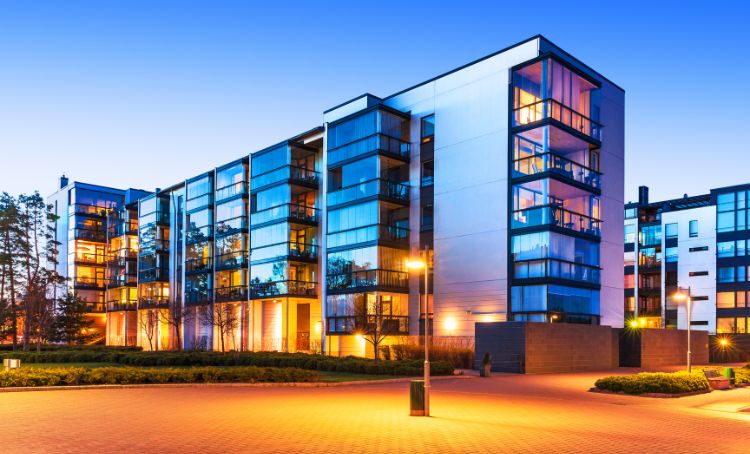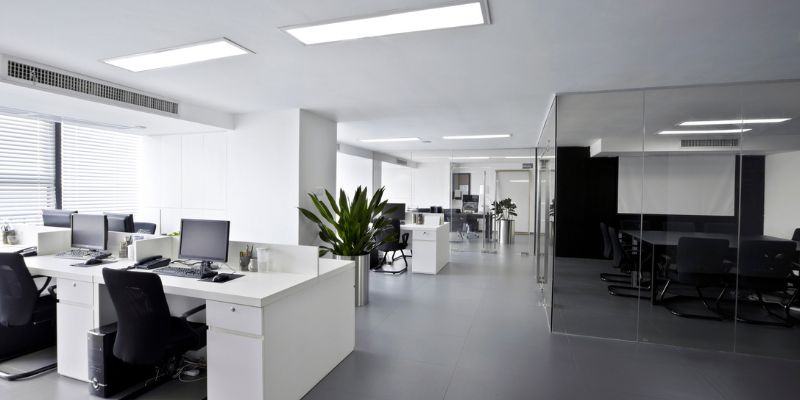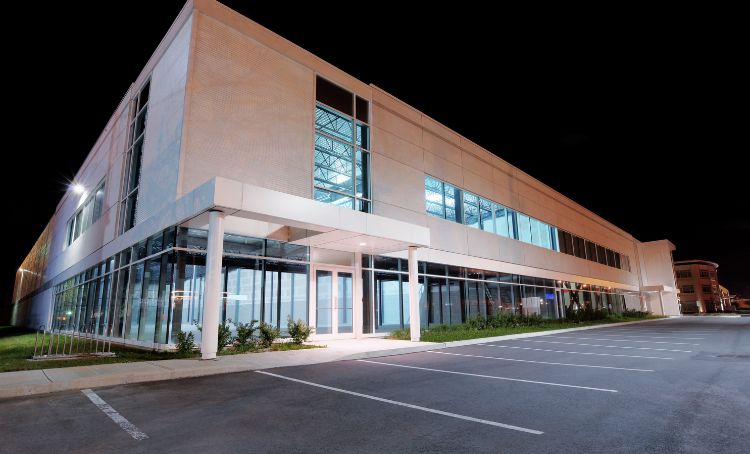Investing in commercial real estate or residential property can be an excellent choice.
If you have previously been successful in single-family residential real estate, you might logically look at commercial property as an option. If you’re considering it, it’s important to be aware of the pros and cons of investing in commercial real estate.
So join us as we cover the main advantages and disadvantages of investing in commercial properties.
What is Commercial Real Estate Investment?
Investing in commercial real estate involves purchasing properties that are used for business purposes, such as office buildings, retail centers, industrial warehouses, or medical offices. Commercial real estate investment offers several advantages and disadvantages compared to other forms of investment, such as residential properties or traditional stocks.
To determine the suitability of commercial real estate investment, it is important for investors to consider their risk tolerance, market conditions, and the potential returns over an extended period of time.
What counts as commercial real estate?

Commercial real estate is any type of real estate property that is used to generate income or provide a workspace, such as office buildings, retail spaces, warehouses, and apartment complexes.
It includes land that is intended to be used for commercial purposes, such as shopping centers, strip malls, hotels, industrial complexes, and medical centers.
Unlike residential properties that are typically owned by individuals for their own use or investment, commercial real estate is used to generate revenue.
Let’s taker a closer look at some of these building types.
1. Office Buildings
Office buildings are a significant segment of the commercial real estate market, offering various options for investors. These buildings can range from high-rise skyscrapers in bustling urban centers to smaller suburban office parks.
The COVID-19 pandemic has had a considerable impact on the demand for office space. With lockdowns and remote work becoming the new normal, many businesses have shifted to a remote work model, leading to a decreased need for physical office spaces. This has resulted in a temporary decrease in demand for office buildings.
However, as the situation improves, companies may gradually return to the office, albeit in a hybrid work environment. As a result, the future outlook for office space remains cautiously optimistic, with potential shifts in the design and usage of office environments.
One specialty segment within office buildings is medical office buildings (MOBs). These properties house healthcare providers and medical facilities, making them relatively resilient in the market. The demand for medical services continues to grow, even during economic downturns, making MOBs an attractive investment option. Additionally, the healthcare sector is less susceptible to remote work trends, further enhancing the stability and potential returns of investing in medical office buildings.
2. Industrial Buildings
Industrial buildings are a significant component of the commercial real estate market, catering to a variety of businesses involved in storage, production, and logistics operations. These properties are designed and equipped to meet the specific needs of industrial businesses.
Warehouses are one type of industrial building and serve as storage spaces for goods and materials. These buildings are essential for businesses involved in inventory management and supply chain operations. Warehouses are typically designed to accommodate large-scale storage, with features such as high ceilings, open floor plans, and loading docks to facilitate the movement of goods.
Distribution centers are another type of industrial property that play a crucial role in the logistics operations of various businesses. These commercial buildings are strategically located to efficiently receive, store, and distribute products to different regions. Distribution centers often have extensive loading and unloading areas, along with advanced technological systems to manage inventory and track shipments.
Manufacturing facilities are industrial buildings where products are produced or assembled. These properties are equipped with specialized equipment and infrastructure tailored to the manufacturing processes of different industries. Manufacturing facilities can range in size and complexity, depending on the nature of the production operations.
Industrial parks are large complexes that house multiple industrial buildings and offer a range of facilities and amenities to businesses. These parks often provide favorable zoning, ample parking, and shared infrastructure such as utilities and transportation access, making them attractive locations for industrial businesses.
3. Retail Spaces
Investing in retail spaces in commercial real estate offers a range of opportunities and challenges. Retail spaces encompass various types, such as shopping malls, strip malls, standalone retail stores, and storefronts located on busy streets or in commercial complexes.
One key benefit of investing in retail properties is the potential for steady rental income. Retail tenants, particularly those in high-traffic areas, can attract a consistent flow of customers, increasing the likelihood of lease renewals. Additionally, retail leases tend to have longer terms compared to residential leases, providing more stability for real estate investors.
However, investing in retail spaces also comes with challenges. The rise of e-commerce has disrupted traditional retailers, leading to store closures and vacancies in shopping centers. As a result, the financial health of retail tenants is a crucial factor to consider. Ensuring that tenants have strong financials and can adapt to changing retail landscape is essential for minimizing vacancy risks and maintaining cash flow.
Furthermore, investing in retail properties often requires higher upfront costs and ongoing maintenance expenses compared to other commercial real estate options. Common expenses include property management fees, marketing costs, and potential renovations to attract and retain tenants.
Despite these challenges, investing in retail spaces can be a lucrative venture for those who are well-informed and able to adapt to market conditions. Conducting thorough due diligence on potential tenants, keeping an eye on market trends, and carefully evaluating the financials are essential steps in making informed investment decisions in the retail sector.
4. Multi-Family Units
Investing in multi-family units in commercial real estate offers numerous advantages and considerations. One significant benefit is the potential for stable rental income. Multi-family properties often have multiple units, allowing for consistent cash flow even during economic downturns. Additionally, the wide availability of debt with low-interest rates makes it easier to finance these investments.
During challenging economic times, multi-family units can prove to be more resilient compared to other types of commercial properties. The demand for affordable residential rentals tends to remain steady, providing investors with a reliable revenue stream. This stability can be particularly advantageous when other real estate sectors experience volatility.
However, there are also potential challenges associated with investing in multi-family units. One consideration is the possibility of high renter turnover. It’s important for investors to budget for potential vacancies and factor in the costs of finding new tenants. Additionally, multi-family units often have short-term leases, which can lead to increased turnover.
High property taxes are another consideration. Depending on the location, investors may face substantial property tax expenses that eat into their rental income and overall profitability. Lastly, the collection of rent from multiple tenants can entail increased administrative and management costs, such as delinquency tracking and legal expenses.
Despite these potential challenges, the benefits of investing in multi-family units in commercial real estate, such as stable rental income and the availability of low-interest debt, make it an attractive option for investors seeking long-term returns and diversification in their investment portfolio.
If you’re looking for a multi-family loan to kick-start your commercial real estate investment venture, talk to our team today.
Pros of Investing in Commercial Real Estate

There are a range of advantages to investing in commercial properties that make it an appealing choice for many investors.
Here are a few of the major pros for commercial real estate investing:
Fewer Active Responsibilities
When you rent single-family occupancies, you may need to be more hands-on in terms of round-the-clock maintenance and other responsibilities. With commercial properties, your tenants will generally be on the premises only during the business day.
Additionally, some commercial leases place the responsibility of property expenses (such as maintenance and insurance) with the tenants instead of the owner.
Another potential benefit is that your commercial tenants may sign longer lease contracts than many residential occupants would, sparing you the responsibility of finding new tenants frequently.
Better Financing Terms
Commercial property owners typically enjoy more flexibility in regard to financing. You may be able to secure a first or second mortgage with 100% financing, which would not be the case for traditional residential financing.
High Returns on Investment
Commercial real estate offers investors the potential for high returns on investment. There are several income drivers and factors that contribute to the appreciation of property prices in this asset class.
One of the main income drivers in commercial real estate is rental income. As mentioned above, commercial leases tend to have longer terms than residential leases, often ranging from 5 to 10 years or more. This stability provides investors with a reliable source of cash flow. Additionally, commercial tenants are responsible for paying property expenses, such as property taxes and maintenance costs, further enhancing the profitability of the investment.
Market dynamics also play a significant role in driving high returns on investment in commercial real estate. Rental escalations, which are built into many commercial leases, allow for rent increases over time. This can result in rising net operating income, increasing the value of the property.
Furthermore, favorable market conditions, such as low vacancy rates and increasing demand for commercial spaces, can contribute to higher property appreciation. Increased competition for quality commercial buildings can lead to higher rental rates and cap rates, further boosting returns.
Additionally, forced appreciation can contribute to the appreciation of property prices. Let’s look into that further.
Long-Term Appreciation Potential
Investing in commercial real estate offers a strong potential for long-term appreciation. The value of commercial properties can increase over time for several reasons. Firstly, rising demand in certain locations can lead to increased rental rates and property values. As areas become more desirable for businesses or for residential purposes, the demand for commercial spaces can grow, driving up rental income and property prices.
Additionally, property improvements can significantly enhance a commercial property’s value. Renovations, expansions, or the addition of modern amenities can attract higher-paying tenants and increase the property’s worth. By continuously investing in property upgrades, real estate owners can capture potential capital gains over an extended period.
The historical trend of real estate appreciation supports the idea that investing in commercial real estate can yield significant annual returns. For instance, over the past 20 years, the median sales prices of houses in the U.S. have experienced substantial growth. This demonstrates the potential for long-term appreciation in the real estate market.
Tax Deductions and Savings
When it comes to investing in commercial real estate, there are several tax deductions and savings that can benefit investors. One of the biggest advantages is the ability to deduct expenses such as property taxes, mortgage interest, property insurance, and property management fees at tax time.
Property taxes, which can be a significant expense for commercial properties, are generally tax-deductible. The same applies to mortgage interest, which can reduce taxable net income. Additionally, property insurance premiums can also be deducted.
Commercial real estate investors can also take advantage of common deductions on rental properties. These include expenses for maintenance and repairs, leasing fees, owner expenses, and even mortgage interest. These deductions can help reduce taxable income and potentially result in significant tax savings.
Moreover, investment real estate offers potential tax benefits that traditional stocks and other investments may not provide. With commercial real estate, investors can benefit from a stable cash flow and have the ability to offset income with expenses, resulting in a lower taxable net income.
Asset Diversification Benefits
Investing in commercial real estate offers asset diversification benefits that can provide a layer of stability to traditional portfolios. Unlike residential properties, commercial properties entail a different set of risks and rewards, making them a unique investment option.
One of the key advantages of investing in commercial real estate is the low correlation it has with other investment assets. This means that the price movements of commercial properties are often independent of traditional investments, such as stocks and bonds. As a result, when these traditional investments experience volatility or downturns, commercial real estate can serve as a stabilizing factor.
The low correlation between commercial real estate and other investments allows for potential returns that are not solely reliant on market conditions. This is particularly beneficial during market downturns, as commercial real estate can generate stable cash flow through rental income, even when other assets are underperforming.
Cons of Investing in Commercial Real Estate

While investing in commercial real estate can be lucrative, there are several potential downsides to consider.
1. High Barrier to Entry
Unlike residential properties, commercial properties generally require a significant amount of capital to purchase. The upfront costs can be a barrier for many investors, especially those just starting out.
2. More Competition
You might find yourself with more competitors to deal with when you are looking for commercial real estate. That could mean paying more than you had planned to secure an investment.
3. Market Volatility
Commercial real estate is influenced by market conditions and economic factors. Any fluctuations in the economy can impact the demand for commercial space, leading to potential vacancies and lower rental rates.
4. Tenant Risk:
Commercial properties rely on tenants to generate rental income. If a business owner tenant experiences financial difficulties or goes out of business, the investor may face prolonged periods of vacancy and loss of rental income.
5. The Potential for Bad Management
Many commercial property investors prefer to hire property management companies to handle tenants and various ongoing property matters. That can be useful unless the company you hire does not do a good job.
6. Operating Expenses
Commercial properties often come with higher operating expenses compared to residential properties. These can include maintenance costs, property management fees, utility bills, and real estate taxes. These expenses can eat into the potential returns on investment.
7. Potential for Large Vacancy Risks
Commercial properties have a higher risk of experiencing extended periods of vacancy compared to residential properties. Vacancies can lead to loss of income, and filling them can be challenging, particularly in a competitive market. It is crucial to have a proactive strategy in place to minimize the risk of vacancies.
So, Should You Invest in Commercial Real Estate?
The bottom line is – Weigh your options carefully.
Investing in commercial real estate can be a lucrative career, and it may also provide you with a solid form of supplemental income. Just be sure to weigh the pros and cons before you decide whether a commercial real estate investment is appropriate for you.
If you wish to proceed, talk to Express Capital Financing about getting a real estate loan for your next project.
FAQs
What are the disadvantages of commercial real estate investment?
The key disadvantages of investing in commercial real estate include the potential for a long-term commitment, higher costs and risks associated with financing, and a lack of liquidity.
What is a good ROI for commercial real estate?
The return on investment (ROI) for commercial real estate investments can vary widely depending on the type of property, its location, and its condition. In general, however, most investors look for a ROI of at least 8% when investing in commercial real estate. A higher ROI indicates that the investment is performing well and should be considered a good investment.
At the same time , investors should also consider the risk associated with the investment as higher returns often come with higher risks.




